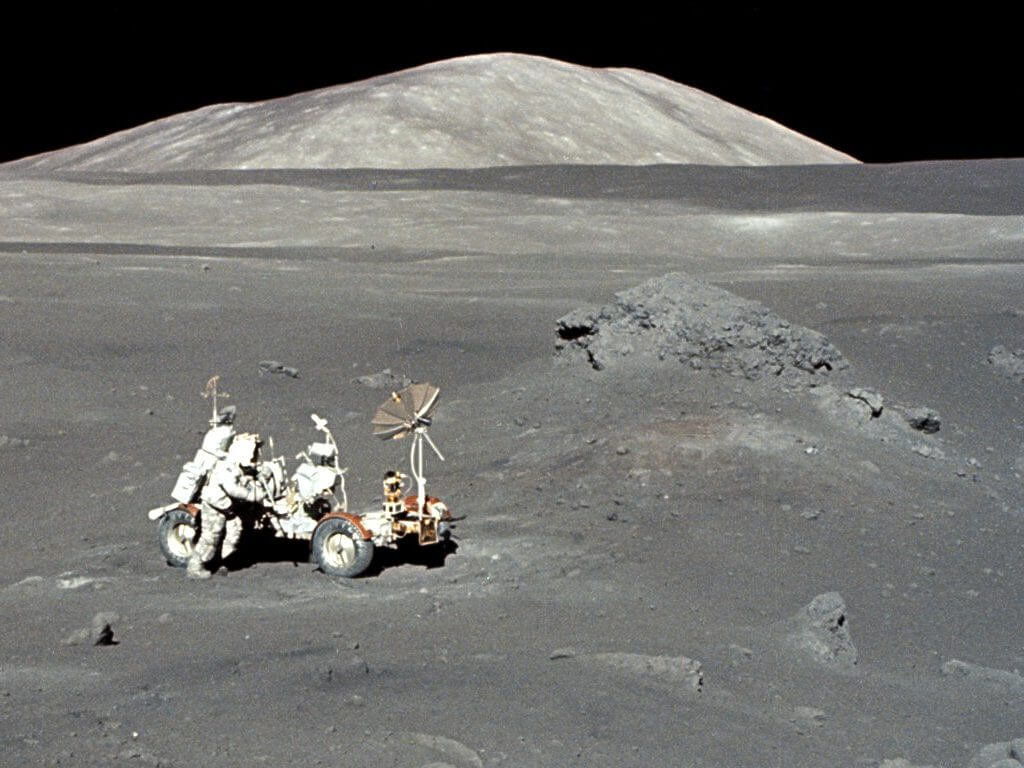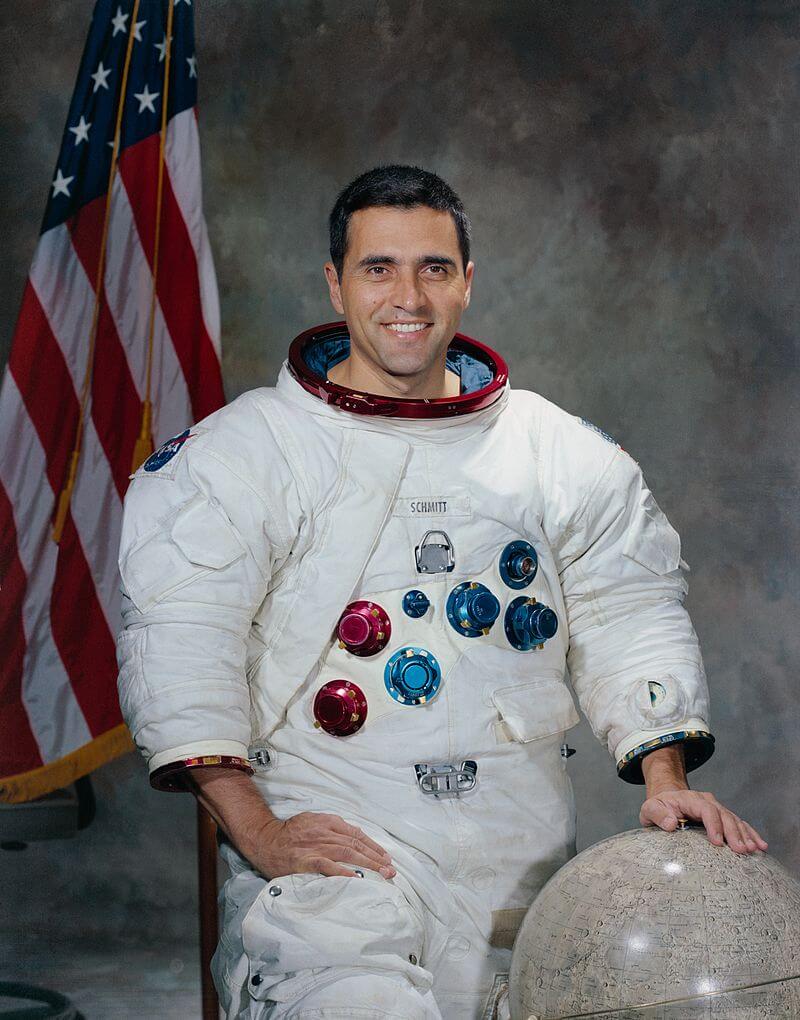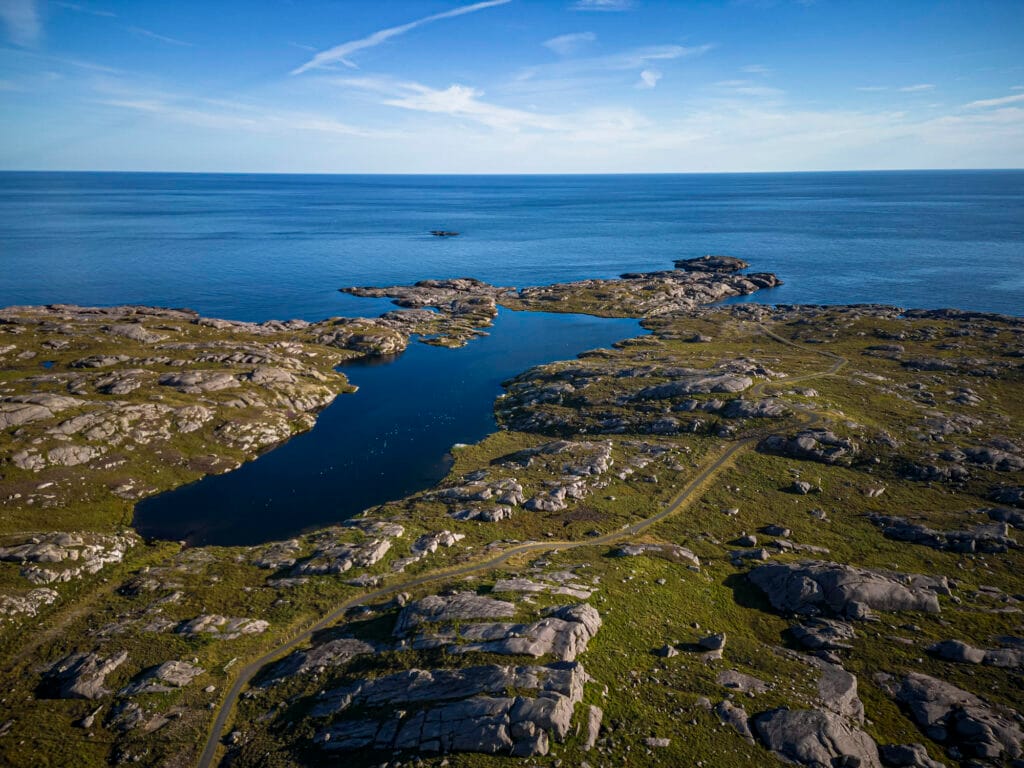
Just a few metres from the mighty North Sea lies the fascinating Hagavatn. Here, a powerful natural experience awaits you in the midst of the unique lunar landscape that Magma Geopark is known for.
The landscape at Hagavatn not only looks like the moon, but it's actually exactly the same type of rock that makes up large parts of the moon. The light-coloured areas of the moon are anorthosite and this is also the dominant rock type along the coast of Magma Geopark.
For those who want to really experience the lunar landscape, we have marked 2 detours from the signposted trail around Hagavatn. When you follow the marked trail around Hagavatn, Walk on the moon will be marked with a small sign. A fantastic playpen awaits both adults and children. Here you can climb and jump from rock to rock. Here, at the very edge of the sea, you can smell and feel the power of nature. If you're lucky, you'll see a sea eagle taking off. The vegetation is sparse, but you'll find hardy plants such as beach carnation and rose root ("Nordic ginseng").
Anorthosite dominates this landscape, and at the beginning of the trip you will also see elements of norite along the way. Anorthosite was formed 930 million years ago deep in the earth. You will also find elements of the Håland anorthosite along the route. This anorthosite was formed approximately 1 billion years ago.
Hagavatn is a small lake on Ytstebrød, on Eigerøy. In 2017, a new gravel road was opened on the west side of the lake. Along the way, you can get an insight into the special coastal and cultural landscape in Dalane, and there are sheep that graze in the area all year round. You also see many traces of how this landscape has shaped itself over millions of years. There are plenty of sickle marks, shifting blocks and scouring streaks in the rock.
If you choose to follow the path around the water, along the coast, you can see traces of the Second World War. Here you can see, among other things, the remains of buildings, a transport track and a large searchlight that was used by soldiers to keep a lookout over the North Sea. You can continue your trip along the coast and will then end up in Rausvåg. This is a small, active harbor where traditional catching and fishing still takes place, including lobster in the winter season. Pass Rausvåg and follow the road back to the car park that was the starting point for the trip.
Geologist Harrison Schmitt was born in the USA on 3 July 1935. He studied geology at the University of Oslo in the late 1950s, and visited Egersund in connection with field studies of anorthosite. He was later employed by the Norwegian Geological Survey (NGU) to draw geological maps.
Schmitt is the only scientist to have been to the moon. He was a member of the Apollo 17 mission and in the course of three days in December 1972 he collected 110 kilos of moon rocks, including anorthosite. He holds the record for the longest stay on the lunar surface.
After his career as an astronaut, Schmitt devoted his life to politics and in 1976 became a senator for the Republican Party.
























Warning
"Walk on Moon" takes place at your own risk. There is no marked path here, and you have to read the terrain yourself. The rock can be very slippery and the waves unpredictable. If you fall into the sea, it is difficult to get ashore. The sea is often cold. Therefore, have great respect for the forces of nature. If you are not used to traveling in this type of nature, you should take care to have a good margin of safety or bring local acquaintances with you.
Category:
Active, Egersund, Geopark, Magma Geopark Sites, Suggestions
See more experiences in Magma Geopark